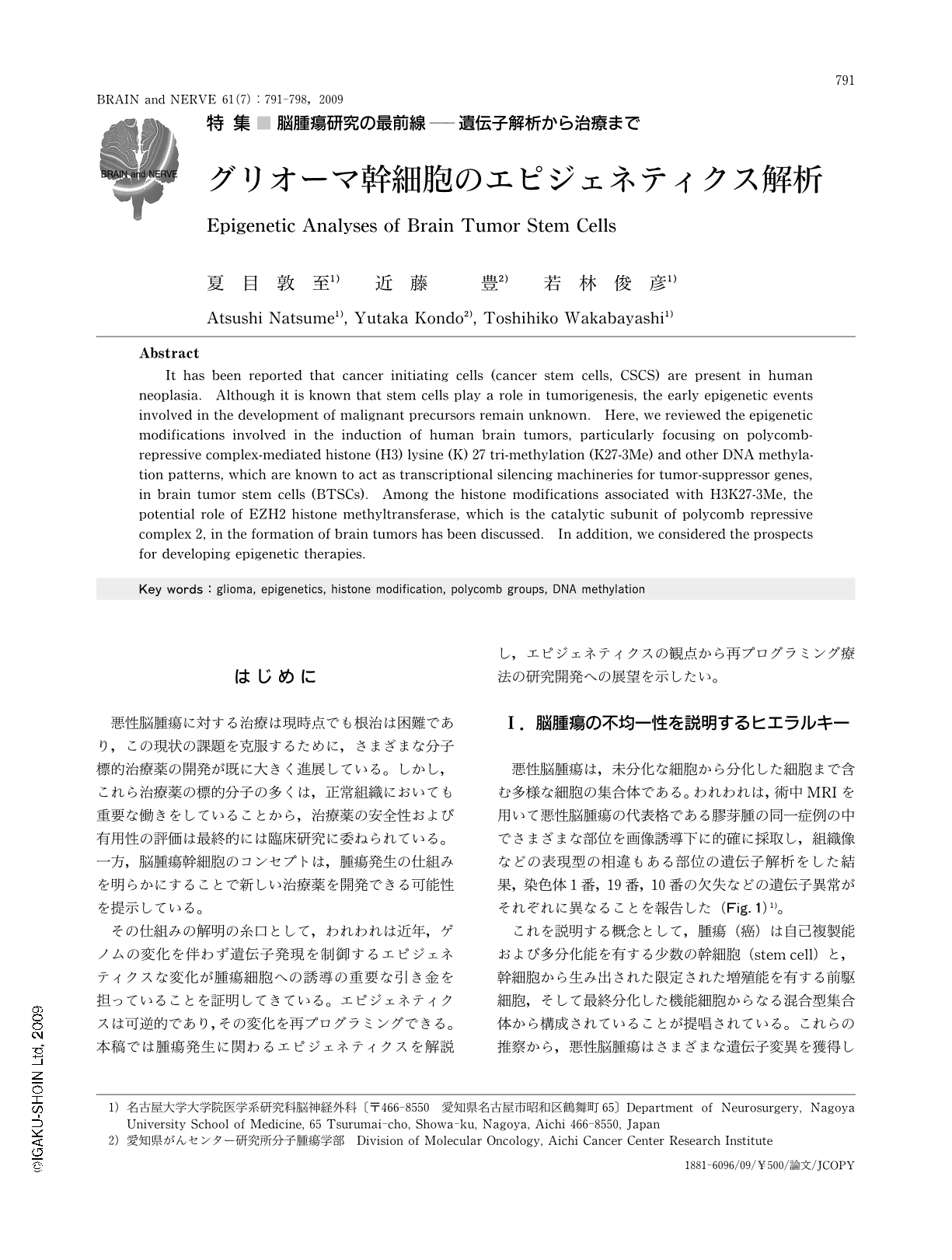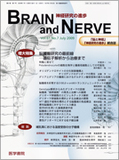Japanese
English
- 有料閲覧
- Abstract 文献概要
- 1ページ目 Look Inside
- 参考文献 Reference
はじめに
悪性脳腫瘍に対する治療は現時点でも根治は困難であり,この現状の課題を克服するために,さまざまな分子標的治療薬の開発が既に大きく進展している。しかし,これら治療薬の標的分子の多くは,正常組織においても重要な働きをしていることから,治療薬の安全性および有用性の評価は最終的には臨床研究に委ねられている。一方,脳腫瘍幹細胞のコンセプトは,腫瘍発生の仕組みを明らかにすることで新しい治療薬を開発できる可能性を提示している。
その仕組みの解明の糸口として,われわれは近年,ゲノムの変化を伴わず遺伝子発現を制御するエピジェネティクスな変化が腫瘍細胞への誘導の重要な引き金を担っていることを証明してきている。エピジェネティクスは可逆的であり,その変化を再プログラミングできる。本稿では腫瘍発生に関わるエピジェネティクスを解説し,エピジェネティクスの観点から再プログラミング療法の研究開発への展望を示したい。
Abstract
It has been reported that cancer initiating cells (cancer stem cells,CSCS) are present in human neoplasia. Although it is known that stem cells play a role in tumorigenesis,the early epigenetic events involved in the development of malignant precursors remain unknown. Here,we reviewed the epigenetic modifications involved in the induction of human brain tumors,particularly focusing on polycomb-repressive complex-mediated histone (H3) lysine (K) 27 tri-methylation (K27-3Me) and other DNA methylation patterns,which are known to act as transcriptional silencing machineries for tumor-suppressor genes,in brain tumor stem cells (BTSCs). Among the histone modifications associated with H3K27-3Me,the potential role of EZH2 histone methyltransferase,which is the catalytic subunit of polycomb repressive complex 2,in the formation of brain tumors has been discussed. In addition,we considered the prospects for developing epigenetic therapies.

Copyright © 2009, Igaku-Shoin Ltd. All rights reserved.


